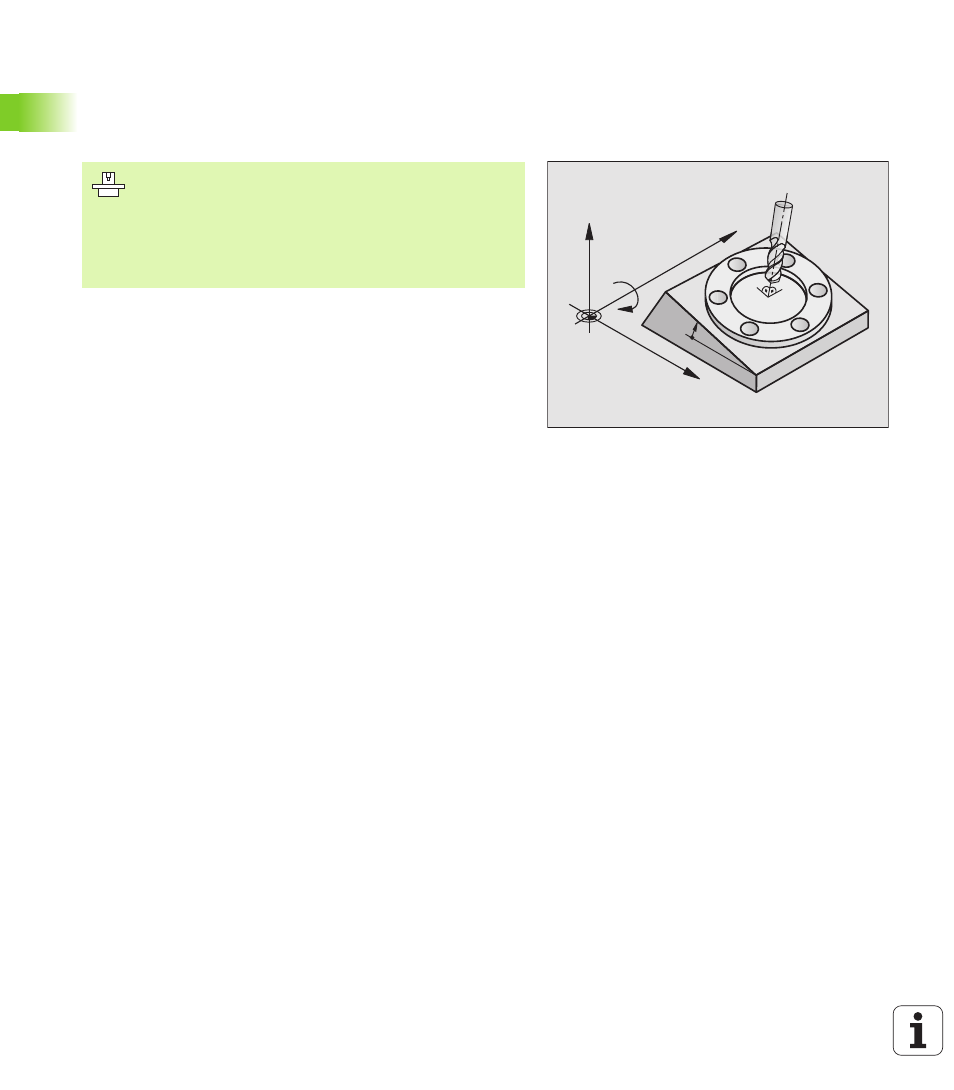5 tilting the working plane (software option 1), Application, function – HEIDENHAIN iTNC 530 (340 49x-01) User Manual
Page 70

70
2 Manual Operation and Setup
2.5 Tilting the W
o
rk
ing Plane (Sof
tw
ar
e Option
1)
2.5 Tilting the Working Plane
(Software Option 1)
Application, function
The TNC supports the tilting functions on machine tools with swivel
heads and/or tilting tables. Typical applications are, for example,
oblique holes or contours in an oblique plane. The working plane is
always tilted around the active datum. The program is written as usual
in a main plane, such as the X/Y plane, but is executed in a plane that
is tilted relative to the main plane.
There are three functions available for tilting the working plane:
3-D ROT soft key in the Manual mode and Electronic Handwheel
mode, see “Activating manual tilting” on page 74.
Tilting under program control, Cycle 19 WORKING PLANE, in the part
program (see “WORKING PLANE (Cycle 19, software option 1)” on
page 438).
Tilting under program control, PLANE function in the part program
(see “The PLANE Function: Tilting the Working Plane
(Software Option 1)” on page 452).
The TNC functions for “tilting the working plane” are coordinate
transformations in which the working plane is always perpendicular to
the direction of the tool axis.
When tilting the working plane, the TNC differentiates between two
machine types:
Machine with tilting tables
You must tilt the workpiece into the desired position for
machining by positioning the tilting table, for example with an L
block
The position of the transformed tool axis does not change in
relation to the machine-based coordinate system. Thus if you
rotate the table—and therefore the workpiece—by 90° for
example, the coordinate system does not rotate. If you press the
Z+ axis direction button in the Manual Operation mode, the tool
moves in Z+ direction.
In calculating the transformed coordinate system, the TNC
considers only the mechanically influenced offsets of the
particular tilting table (the so-called “translational” components).
The functions for tilting the working plane are interfaced to
the TNC and the machine tool by the machine tool builder.
With some swivel heads and tilting tables, the machine tool
builder determines whether the entered angles are
interpreted as coordinates of the rotary axes or as angular
components of a tilted plane. Refer to your machine
manual.
X
Z
Y
B
10°
